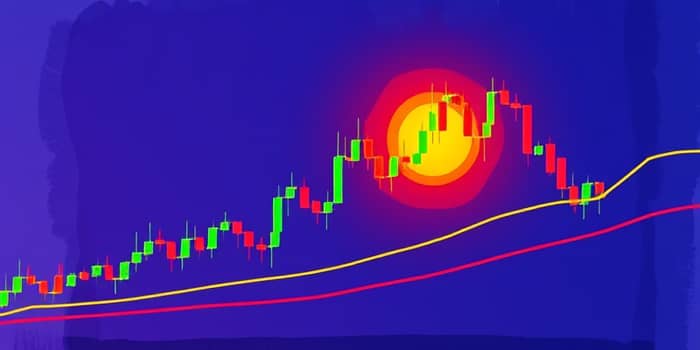
Understanding support and resistance is akin to discovering the hidden architecture of the Forex market. These levels act as the invisible pillars and ceilings that guide price movements, enabling traders to navigate complexity with precision. By mastering these concepts, you gain the tools to anticipate market behavior and make informed decisions that elevate your trading performance.
At their core, support and resistance are more than static lines on a chart; they reflect collective trader psychology and market dynamics. When price approaches these levels, it often pauses, reverses, or consolidates, presenting strategic entry and exit opportunities for disciplined traders.
Price level where buying interest tends to emerge is known as support. It stands as a psychological floor, suggesting that demand will increase and halt further declines. Conversely, resistance is the zone where supply overtakes demand, creating a ceiling that frequently caps upward moves.
These levels are integral for Forex participants, providing a framework to identify trends, set realistic targets, and manage risk. With a clear grasp of support and resistance, traders can interpret chart patterns and market signals more effectively.
Accurate identification of key levels is a skill that blends art and science. By combining historical data with technical tools, you craft a roadmap for potential price reversals.
Blending these methods enhances reliability. For instance, a 50% Fibonacci retracement that aligns with a historical swing low yields a stronger support area than either method alone.
Not all levels carry equal weight. Recognizing the distinctions helps prioritize trading opportunities and gauge potential breakout strength.
With levels identified, you can implement actionable tactics. Consistency and discipline in execution are paramount to long-term success.
To improve entries and exits, combine level-based signals with candlestick patterns or oscillators. A bullish engulfing candle at support, for example, can enhance confidence in a long trade.
Risk management transforms potential losses into controlled investments. Without proper safeguards, even the best strategies can fail.
Place your stop-loss orders just beyond support or resistance to limit losses when levels break. This prevents small losses from becoming devastating. Using limit orders near these zones ensures you enter at optimal prices without chasing the market.
Position sizing is equally crucial. Allocate only a small fraction of your capital per trade, so a single adverse move cannot erode your account. By calculating risk-to-reward ratios, you ensure that potential gains outweigh possible losses, fostering sustainable growth.
Beyond basic lines and zones, advanced techniques can refine your edge and provide deeper insights into market structure.
Fibonacci Retracement Levels offer a systematic way to project support and resistance. Common retracement percentages—23.6%, 38.2%, 50%, 61.8%, and 78.6%—often coincide with turning points in price.
Trendlines serve as dynamic visual guides to price, adjusting with each swing high or low and helping you stay aligned with prevailing trends.
Market movements are driven by human emotions—fear, greed, and hope. Support and resistance are reflections of these collective responses. When many traders anticipate a bounce at support, their combined buying pressure creates a self-fulfilling prophecy.
By appreciating the sentiment behind each level, you avoid trading blindly. Instead, you step into the shoes of the broader market, understanding why price hesitates or accelerates at certain points. This empathy with market psychology fosters patience and confidence in your strategies.
The most sophisticated analysis is only as good as its execution. Regular practice, backtesting, and journaling transform theoretical knowledge into practical skill.
Maintain a trading journal that records chart setups, entry and exit levels, outcomes, and emotional state. Review your successes and failures to identify patterns and areas for improvement. Over time, this disciplined approach builds intuition and hones your ability to spot high-probability setups.
Remember, consistency beats perfection. By sticking to your plan, refining your methods, and staying adaptable, you empower yourself to thrive in dynamic market conditions.
Support and resistance are the fundamental pillars of Forex technical analysis, offering clarity in the midst of market chaos. By learning to identify, interpret, and trade these levels, you gain a strategic advantage that aligns your actions with underlying market forces.
Embrace rigorous risk management, leverage advanced tools like Fibonacci retracements and trendlines, and cultivate a deep understanding of market psychology. Through continuous practice and thoughtful analysis, you can turn support and resistance into powerful allies on your trading journey. Step forward with confidence, and let these key levels guide you toward consistent, sustainable success.
References













